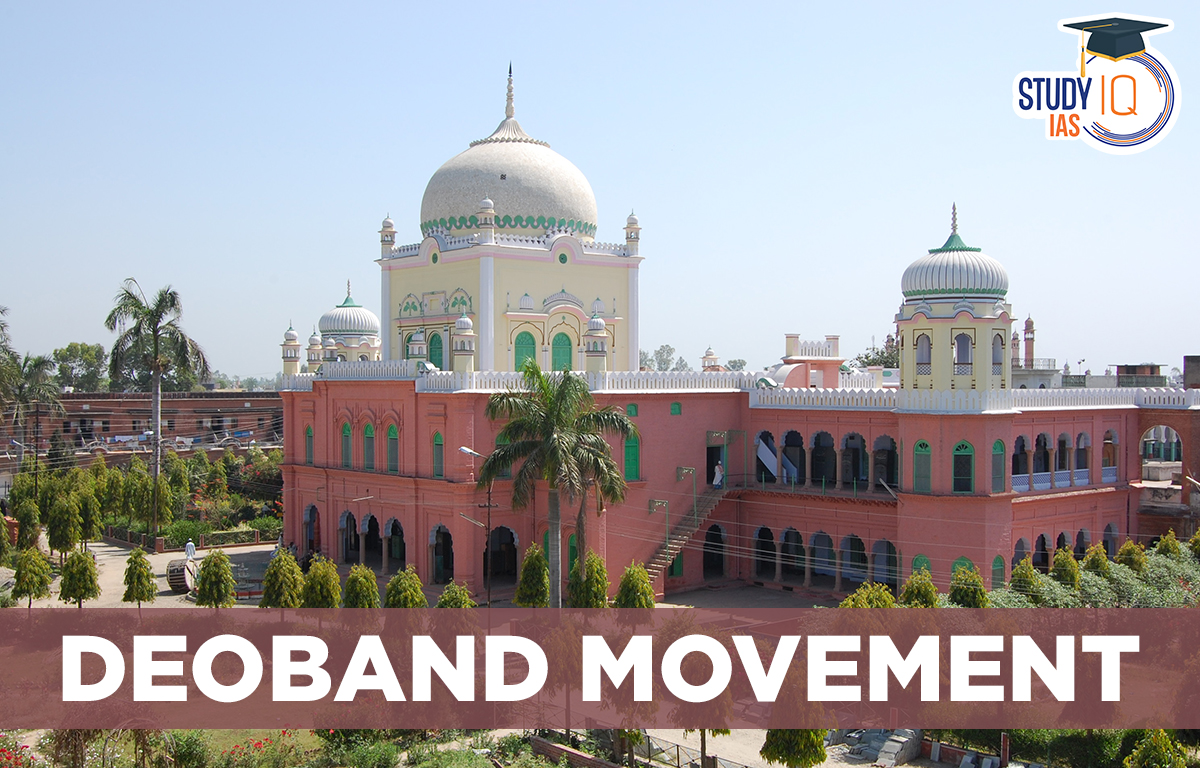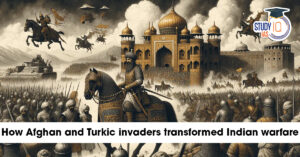Table of Contents
Deoband Movement
The dedicated branch of Muslim ulema was responsible for coordinating the Deoband Movement. It was a revivalist movement with the dual objectives of preserving the spirit of warfare against foreign rulers and disseminating the clear teachings of the Quran and Hadis among Muslims. Mahmud-ul-Hasan (1851–1920), the new leader of Deoband, sought to give the school’s theological instruction some intellectual and political weight. The liberalization of Islam led to a political awakening among its followers. In order to prepare for the UPSC Civil Service Exam, this article will provide you with information on the Deoband Movement.
Read More: Ahmadiyya Movement
Deoband Movement History
In order to develop religious leaders for the Muslim community, Muhammad Qasim Nanautavi (1832–80) and Rashid Ahmad Gangohi (1828–1905) launched the Deoband Movement in 1866 at the Darul Uloom (or Islamic academic centre) in Saharanpur district (United Provinces). They both originated from ‘ulama households, were raised in Doab towns, and were inspired by Delhi’s intellectual scene. They built a madrasa at Deoband’s Chattah Masjid in 1867.
They desired that their school stand on its own and not merely be a neighborhood mosque’s outpost. The informal and individualized teaching method that had been practiced for generations was replaced by a permanent teaching team. The school had students who participated in a defined curriculum and annual tests. The organizational structure was largely modified to Deoband’s requirements after being acquired in large part from British organizations.
The Deoband School established a successful Islamic educational system with the help of ashraf Muslims all over the world. It supported the notion of resuming correct Islamic observance and paved the way for a resurrected class of ulama capable of operating independently of a Muslim state. Deoband drew relatively poor students who could not afford Western education because it was rigidly orthodox, unlike the Wahhabis, and it was opposed to Sayyid Ahmed for both his doctrinal innovations and his political loyalty.
The Deoband Movement sought the moral and religious rejuvenation of the Muslim community, in contrast to the Aligarh Movement, which sought the wellbeing of Muslims through Western education and British government sponsorship. Against Syed Ahmed Khan’s organisations, the United Patriotic Association, and the Mohammadan Anglo-Oriental Association, the Deoband School issued a fatwa (religious decree) in 1888, supporting the foundation of the Indian National Congress.
Read More: Faraizi Movement
Deoband Movement Founder
Muammad Bid Usayn founded it in the Uttar Pradesh district of Sahranpur in 1867. The 18th-century Muslim reformer Shh Wal Allah and the Indian Wahhbiyyah of the early 19th century had a significant impact on Deoband’s theological perspective, giving it a particularly orthodox and puritanical outlook.
Read More: Wahabi Movement
Deoband Movement Beliefs
According to Deobandis, Islam has two main focuses: tariqah and shariat, or the law based on religious texts and understanding (the path derived from religious experience). They consequently embraced Sufism in all of its disciplinary guises, as well as the ulama’s role in interpreting the four branches of Islamic law. The foundation for religious knowledge was laid by the Quran, hadith, qiyas (analogical reasoning), and ijma (consensus), but comprehending them required the ulama to serve as interpreters.
The Deobandis accepted Sufism but disapproved of certain rituals and the power of pirs who claimed sanctity via lineage rather than learning. Islamic law also forbade visiting saints’ graves and keeping a record of their yearly decease rates. Some detractors contend that rather than being motivated by a wise political theory, Deoband’s support for nationalists is more a result of its vehement animosity to Syed Ahmed Khan. Mahmud-ul-Hasan, the new Deoband head, gave the school’s theological doctrine political and academic weight.
He came up with a solution that balanced nationalist objectives with Islamic beliefs. Hasan’s thoughts on defending Muslims’ political and religious rights in the context of Indian unity and national goals were given tangible form by the Jamiat-ul-Ulema. Supporter of the Deoband School Shibli Numani pushed for the integration of English and European sciences into the curriculum. He founded the Nadwatal Ulama and Darul Uloom in Lucknow between 1894 and 1896. He had faith in the idealistic nature of the Congress and in the capacity of Muslims and Hindus in India to collaborate to forge a state where they could live in harmony with one another.
Read More: Akali Movement
Deoband Movement Impact
Deoband’s unique approach to Islamic education which comprised an established faculty, a set curriculum, and regular examinations, was the initial factor in the school’s influence as a school and as a transitional socio-religious movement. The organization of voluntary groups in England and the English educational system served as models for this structure and the tactics employed to earn money.
The Deobandis gained a great deal of respect and influence in the North and elsewhere thanks to their students and the countless fatwas they issued on matters pertaining to good religious behaviour. They also debated with opponents of Islam as well as Muslims who disagreed with their understanding of Islam, and they encouraged the formation of schools fashioned after the Deoband ul-‘Ulum.
Read More: Singh Sabha Movement
Deoband Movement UPSC
The Deobandis were a living legacy of Indo-Muslim thinking and practise rather than products of the colonial environment. At Deoband, instruction was offered in the traditional form of Islam. The numerous Hindu and Muslim reformative schools of thought showed a profound awareness of the need for religious reconstruction and moral reform, as well as a desire to bring all individuals professing the same faith together, despite their obvious differences. They supported individualism and rationalism, the two pillars of contemporary secular thought. The applicants preparing for the UPSC Examination will find all the information regarding the Deoband Movement in this article.
Read More: Temple Entry Movement


 Birsa Munda Birth Anniversary 2025: Life...
Birsa Munda Birth Anniversary 2025: Life...
 Military Innovations of Afghans and Turk...
Military Innovations of Afghans and Turk...
 Self-Respect Movement, History, Objectiv...
Self-Respect Movement, History, Objectiv...

























